Ever wondered why some retail brands feel effortless to shop with, while others leave you frustrated at every turn? The difference often comes down to customer experience or CX.
Shoppers don’t just buy products; they buy how a brand makes them feel.
The most successful retailers know that a powerful customer experience (CX) is their ultimate competitive edge. But delivering great CX isn’t accidental; it requires a clear strategy that touches every part of the retail journey, from online browsing to in-store interactions.
In this guide, we’ll explore 12 proven strategies on how to improve customer experience in retail to help you make every interaction meaningful and aligned with what modern customers truly expect, and designed to keep them coming back.
What Is Customer Experience in Retail?
Customer experience (CX) in retail is the complete impression a customer forms from every interaction with a brand, long before and after a purchase. It's the emotional connection that’s built across the entire journey, from start to end.
Leading brands of 2025 win superior CX in three ways:
- Actively listening to customer feedback everywhere it appears
- Creating a smooth omnichannel journey that feels the same online and in-store
- Using AI-Native intelligence for genuine personalization.
For instance, imagine a gardening app that notices your search for tomato seeds, and then gently suggests a specific fertilizer and a care video when you walk near that aisle in the physical store.
This powerful combination of listening, smooth integration, and smart assistance creates the memorable, effortless experiences that build true customer loyalty and combat churn.
12 Proven Ways to Improve Customer Experience in Retail
Here are some expert-recommended tips for enhancing customer experience in online retail and offline to transform your retail customer experience from ordinary to unforgettable:
1. Personalization at Scale
Generic marketing blasts are a thing of the past. Modern customers expect interactions tailored to their personal preferences and behaviors.
The importance of customer experience in retail can be viewed from this study by McKinsey, which found that ~71% of consumers expect brands to tailor interactions, and when that doesn’t happen, 76% feel disappointed.
Now, personalization goes beyond using a first name in an email. At scale, it leverages data and technology to deliver individualized experiences to every customer. It involves analyzing purchase history, browsing data, and engagement patterns to serve up relevant product suggestions and content.
For instance, a home goods retailer can send a campaign featuring patio furniture and grill accessories to a customer who recently bought a lawnmower, directly speaking to their next likely need and encouraging further purchases.
Here’s another super interesting stat: Personalized product suggestions influence 28% of shoppers to buy items they hadn’t planned on purchasing earlier! That’s the power personalization brings.
The key is to use your customer data to create a sense of one-to-one communication, making each customer feel like you have a direct window into their specific needs and desires.
2. Omnichannel Consistency
Customers no longer see a distinction between your online store, your mobile app, and your physical location. To them, it is all one brand.
And that is why an omnichannel strategy ensures the experience is as seamless as possible when they move between these touchpoints. Studies in fact show that businesses with a strong omnichannel approach retain nearly 9 out of 10 customers!
Omnichannel consistency means a customer should be able to check a product’s inventory online, go to the store to try it on, and then use a mobile coupon to complete the purchase.
For instance, a common failure point is when a promotion runs online but is not recognized in-store, instantly creating friction and eroding trust.
Walmart excels at this; its omnichannel approach blends its brick-and-mortar presence with its digital platform; customers can choose options like picking up orders at the store or having them delivered to their doorstep.
The Walmart app further lets shoppers browse online, discover exclusive in-store offers, and even scan products to speed up checkout.
3. Customer Support Excellence
When something goes wrong, the quality of your customer support can determine if you lose a customer for life or gain a loyal advocate. 43% of customers walk away from a brand after a poor service experience.
Excellence here means being accessible, empathetic, and effective. Support should be easy to find on every channel, whether it’s phone, email, live chat, or social media. More importantly, agents must be empowered with the information and authority to solve problems without unnecessary transfers or delays.
Zappos, for instance, built its reputation not on its shoe inventory, but on its fanatical customer service, where representatives are encouraged to spend as much time as needed to make a customer happy.
To enhance your support, 'first-contact resolution' should be the primary metric, focusing on solving the customer's issue completely in a single interaction. This directly impacts retention by preventing frustration from compounding across multiple touchpoints.
4. Streamlined In-Store Experiences
Physical retail still matters, and they must offer something digital channels cannot: immediate, tangible, and experiential value.
A streamlined in-store experience aims to minimize customer effort and maximize engagement. For instance, imagine solutions like mobile checkout options that allow associates to complete transactions anywhere in the store, eliminating long queues.
Apple Stores are a masterclass in this; their open layout encourages interaction, and employees with mobile devices can handle everything from sales to tech support on the spot.
To make in-store experiences smooth and memorable, ensure your store is easy to navigate with clear signage and that staff are readily available not just to ring up sales, but to provide genuine product expertise and assistance.
5. Real-Time Feedback and Immediate Response
Waiting for a quarterly survey to understand customer sentiment is like driving in reverse with no endpoint!
Real-time feedback mechanisms, such as a simple one-tap smiley face rating on a digital receipt or a post-interaction SMS survey, capture the customer's feelings when they are most potent.
77% of customers view brands more positively when companies actively seek and respond to feedback. The true power, however, lies in the immediate response. If a customer reports a negative experience, a system should alert a manager to intervene within minutes, not days.
For example, a retail manager might receive an alert that a customer rated their service poorly and can immediately work on an apology and a solution, potentially salvaging the relationship before it’s too late.
This proactive approach demonstrates that you are listening and that you care about their experience in the moment. This real-time churn detection allows brands to prevent customer loss at the moment of highest risk.
6. Proactive Service and Issue Resolution
The most impressive service and the highest form of service is the kind that the customer never has to ask for. If a flight is delayed, an airline proactively rebooking passengers onto the next available route is a classic example.
In retail, this could mean a software company sending an email tutorial to a user who seems stuck on a particular feature, or a retailer proactively informing a customer that their back-ordered item will be delayed and offering a discount for the inconvenience.
Proactive service and treating customers like a person (and not a number) is the ultimate expression of the fact that you care about the relationship you share with your customer base. It's also a powerful churn prevention tool, as resolving issues before customers vocalize frustration keeps satisfaction high.
7. Easy Returns and Exchanges
A difficult returns process is one of the fastest ways to destroy customer trust and guarantee they will not shop with you again. An easy, transparent, and hassle-free returns policy, on the contrary, is a powerful marketing tool.
Customers see easy returns and exchanges as a form of insurance, reducing the perceived risk of a purchase. Zappos’ CEO, Craig Adkins, notes,
“Our best customers have the highest return rates, but they are also the ones that spend the most money with us and are our most profitable customers. Zappos' modus operandi is not to give its purchasers the cheapest footwear on the block, but to give them the best service: hence, a 365-day returns policy, and free two-way shipping.”
Today, innovations like returnless refunds, where a retailer tells a customer to keep or donate a low-cost item while still issuing a refund, are gaining traction. This eliminates the logistical hassle for both parties on inexpensive items and generates incredible goodwill (Win-win).
Offering multiple return options, including in-store, by mail, or via a third-party drop-off point, provides the flexibility modern customers demand.
8. Rewards Programs for Loyalty
Effective loyalty programs have evolved far beyond simple point-collection systems.
The most successful programs make members feel like valued insiders. 73% of consumers are more likely to recommend a brand if it offers a strong loyalty program.
Sephora’s Beauty Insider program is a masterclass in this, offering members birthday gifts, access to exclusive makeup classes, and the ability to redeem points for high-value products.
Loyalty programs create an emotional connection beyond a transactional relationship. The data from these programs is also invaluable, providing a deep well of information for personalization efforts and helping to identify your most valuable customer segments while detecting churn risk before customers disengage.
9. Social Proof And Reviews
Customers trust each other more than they trust brands. Social proof, in the form of customer reviews, user-generated photos, and Q&A sections on product pages, is the digital equivalent of a word-of-mouth recommendation.
A report suggests that 75% of shoppers check reviews and testimonials before buying, and 72% trust user-generated reviews more than brand-created content.
As Jeff Bezos states ‘If you make customers unhappy in the physical world, they might each tell six friends. If you make customers unhappy on the Internet, they can each tell 6,000.’
So, actively showcasing content on your site and social media channels not only provides authentic validation for your products but also directly impacts revenue lines.
Furthermore, responding to reviews, both positive and negative, shows you are engaged and care about customer feedback.
10. Post-Purchase Follow-Ups
The relationship with a customer should not end when the transaction is complete. A thoughtful post-purchase follow-up can turn a one-time buyer into a repeat customer.
Now, we’re not talking about just a shipping confirmation email. It could be a personalized email a week after delivery, checking to see if they are happy with their new coffee maker. Or, it could be a text message with a video on how to assemble the new bookshelf they bought.
Such human touches after the transaction signal that your brand truly cares about customer long-term satisfaction, not just short-term revenue. It also signals that your interest in their satisfaction is genuine and long-term, building the kind of relationship that prevents churn.
11. AI-Driven Recommendations and Chatbots
In 2025, AI chatbots have become the invisible shop assistants of online retail.
As Andy Jassy, CEO of Amazon, puts it: ‘We’re using Generative AI to make customers’ lives better and easier.’ That vision is now a reality across the retail world.
Consider this: By 2025, 85% of customer interactions are expected to happen without human agents. So, whether it’s a quick ‘What are your holiday hours?’ or ‘Where is my order?’AI-powered assistants will now provide instant, accurate responses at scale.
But the impact of AI goes far beyond service. On the product side, it powers the recommendation engines behind those “customers also bought” or “you may like” suggestions that encourage larger basket sizes.
Giants like Amazon and Netflix rely on these data-driven systems to analyze browsing patterns, predict needs, and significantly lift average order value.
The real magic of these technologies is when they operate in the background, making the shopping journey smoother and more intuitive without the customer even noticing.
12. Data-Driven Product Recommendations
Product recommendations focus on the use of data to curate and present relevant parallel products. AI-powered chatbots are helping brands cut support costs and boost revenue by up to 25% through smart product recommendations.
For example, on a product page for a specific grill, you can display a module that says, ‘Complete the Set,’ showing the grill cover, tools, and more that 70% of other buyers purchased. Or, on a category page for ‘Workout Leggings,’ you can sort items based on real-time sales data from customers in a similar demographic.
Further, you can create automated collections like ‘Frequently Bought Together’ to encourage larger baskets. A simple ‘Customers who viewed this item also viewed…’ can help shoppers discover alternatives and confirm they are on the right track.
In simple terms, think of data-driven product recommendations as an activity where your collective customer data works for the individual shopper, focused more on personalization than generalization.
Why AI Matters: How Does SentiSum Enhance Retail CX
In retail, customer feedback is everywhere, hidden in support tickets, reviews, and calls. The real challenge isn't collecting it, but understanding it fast enough to act and prevent churn before it happens.
Unlike legacy tools that just flag a problem, SentiSum's AI-Native Voice of Customer platform uncovers the real, context-driven reason behind customer friction from 100+ sources, including support platforms like Zendesk, Freshdesk, Dixa, Intercom, and Gorgias, plus review sites, social media, surveys, live chat, and voice calls.
It turns scattered voices into a clear action plan for your teams, with a focus on real-time churn detection and retention insights.
Kyo: AI Agent for Real-Time Guidance
Kyo, SentiSum’s always-on AI agent, constantly interprets customer conversations in real time, highlighting friction points and suggesting the subsequent best actions to reduce churn.
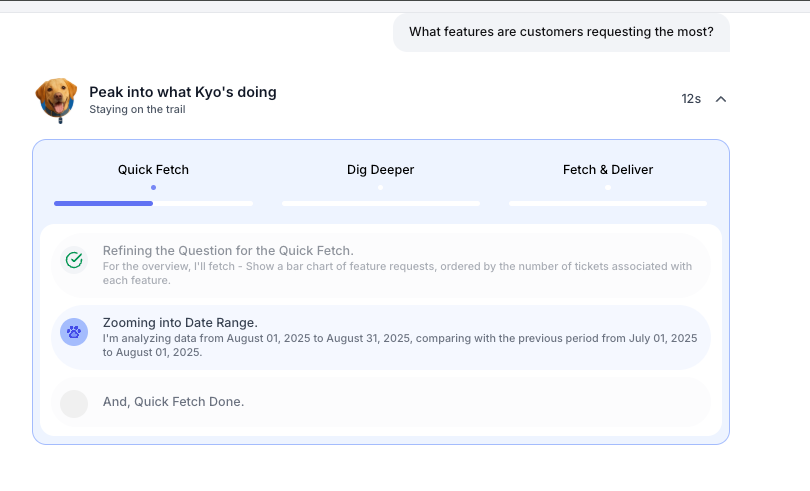
This frees your CX, product, and leadership teams from manual analysis, ensuring everyone is aligned and can focus on implementing solutions (not just finding them) while preventing churn through proactive intervention.
From Data Silos to a Single Customer Story
Most retailers have feedback trapped in separate systems: a helpdesk for tickets, a tool for reviews, and another for surveys. This creates blind spots. SentiSum breaks down these walls, unifying every channel into one narrative.

You see the complete journey, understanding how a negative review might connect to a prior support ticket, revealing systemic issues instead of isolated complaints. This cross-functional visibility is essential for strategic decision makers who need to connect CX improvements directly to retention metrics and revenue impact.
Discovering the Root Cause, Not Just Topics
Basic tagging might tell you customers are upset about ‘delivery.’ SentiSum goes deeper, distinguishing between a specific postal service losing packages, couriers arriving late, or damaged boxes due to poor packaging.
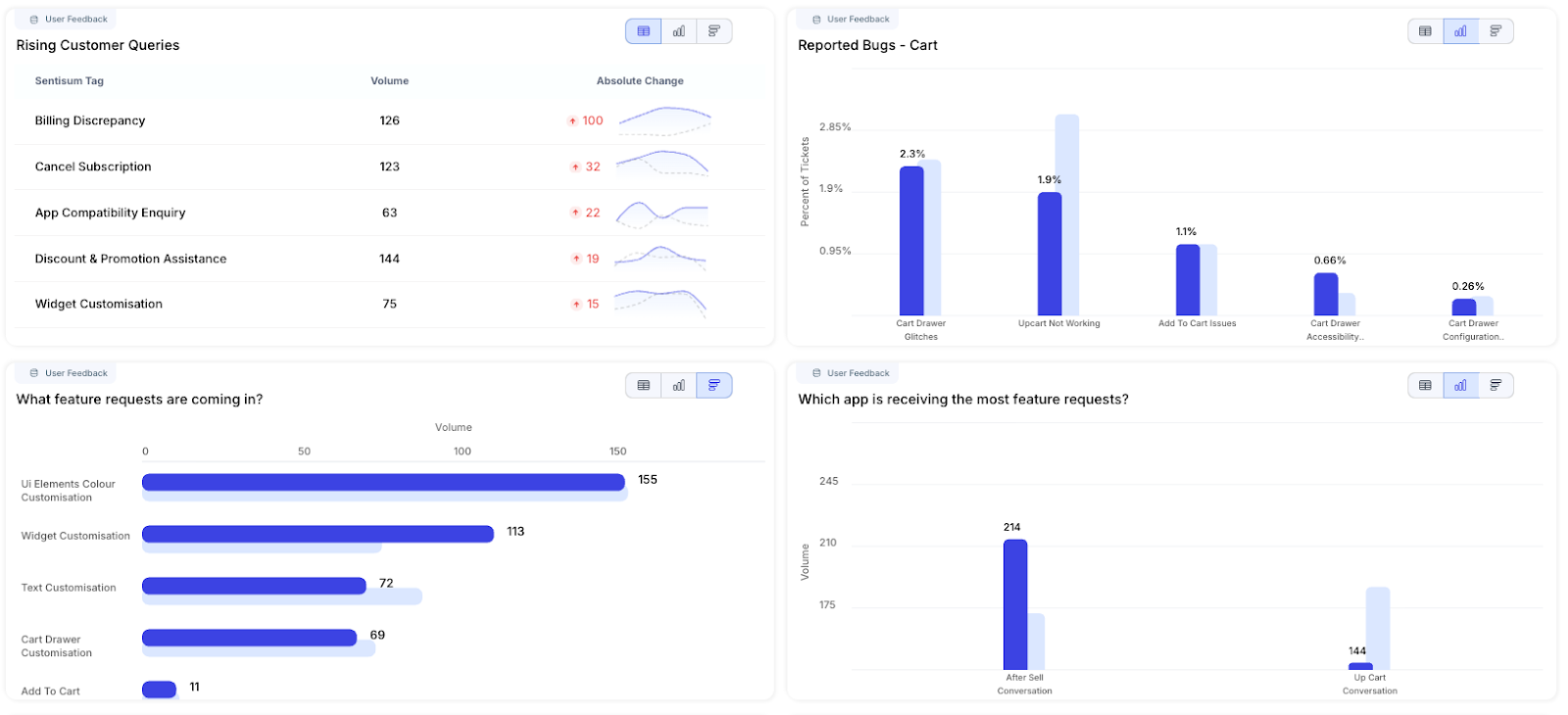
This granularity uncovers the exact operational leak, allowing you to fix the right process, not just guess at the problem and prevent future churn by addressing root causes before they escalate.
Understanding the Real Drivers of NPS and CSAT
SentiSum connects qualitative feedback directly to NPS and CSAT ratings. It identifies not just that a score dropped, but which specific product error, delivery delay, or support mishap caused it.
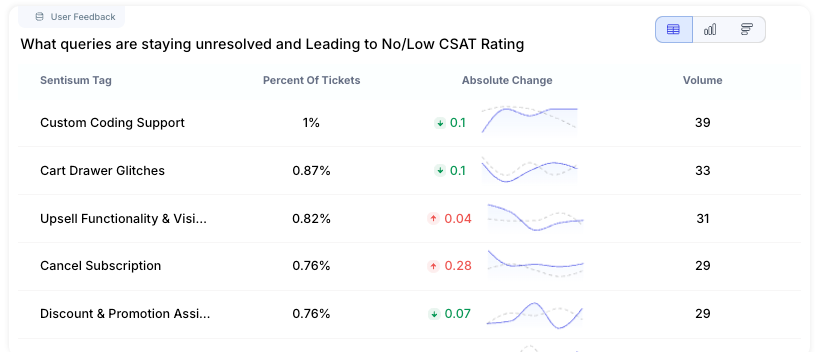
This moves teams from tracking numbers to solving the actual problems customers mention in their own words, building strategic narratives that Customer Insights and VoC leaders can present to product, marketing, and operations teams.
Acting Proactively with a Customer-First AI
Waiting for quarterly reports means reacting to old news. SentiSum delivers AI-powered insights in minutes, not months.
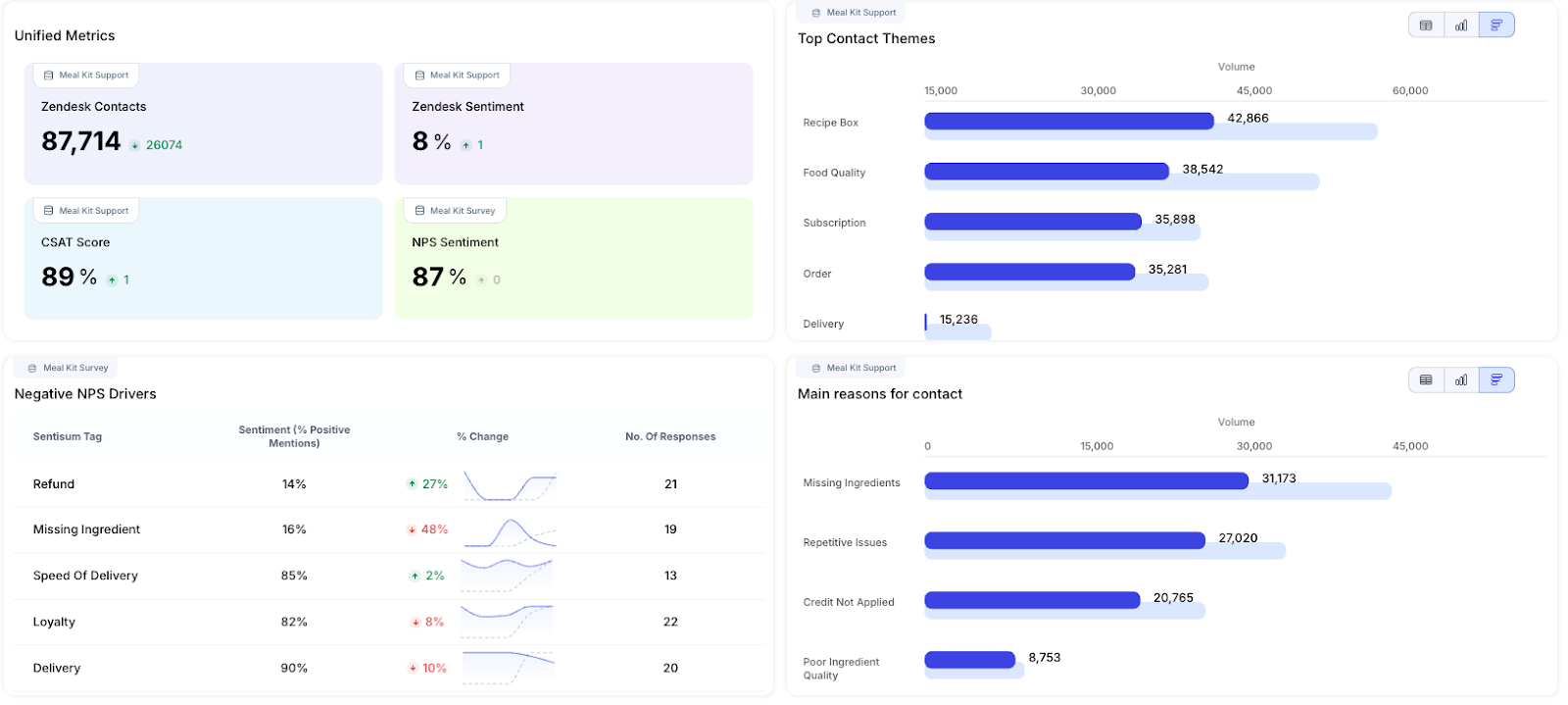
This speed allows you to move from awareness to resolution proactively. Imagine identifying a faulty product batch from support chatter and social comments before it triggers a wave of negative reviews, protecting both revenue and reputation while preventing subscription cancellations.
Heading 1
Heading 2
Heading 3
Heading 4
Heading 5
Heading 6
Lorem ipsum dolor sit amet, consectetur adipiscing elit, sed do eiusmod tempor incididunt ut labore et dolore magna aliqua. Ut enim ad minim veniam, quis nostrud exercitation ullamco laboris nisi ut aliquip ex ea commodo consequat. Duis aute irure dolor in reprehenderit in voluptate velit esse cillum dolore eu fugiat nulla pariatur.
Block quote
Ordered list
- Item 1
- Item 2
- Item 3
Unordered list
- Item A
- Item B
- Item C
Bold text
Emphasis
Superscript
Subscript

.webp)
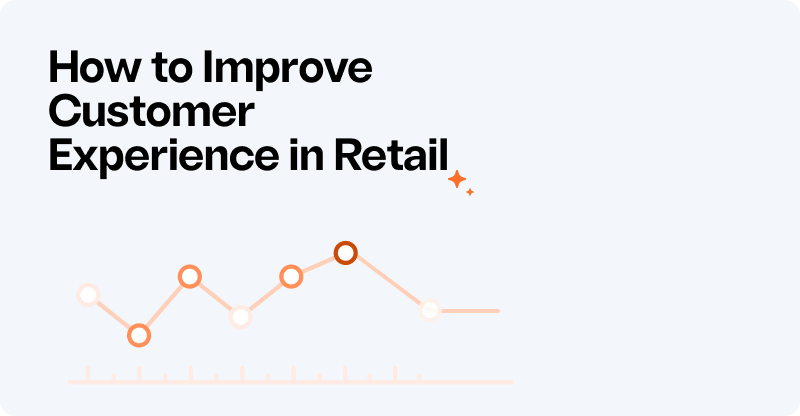






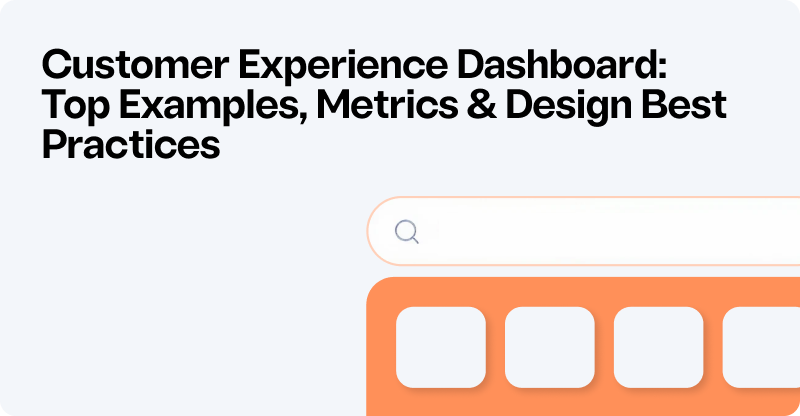

.webp)

.svg)











